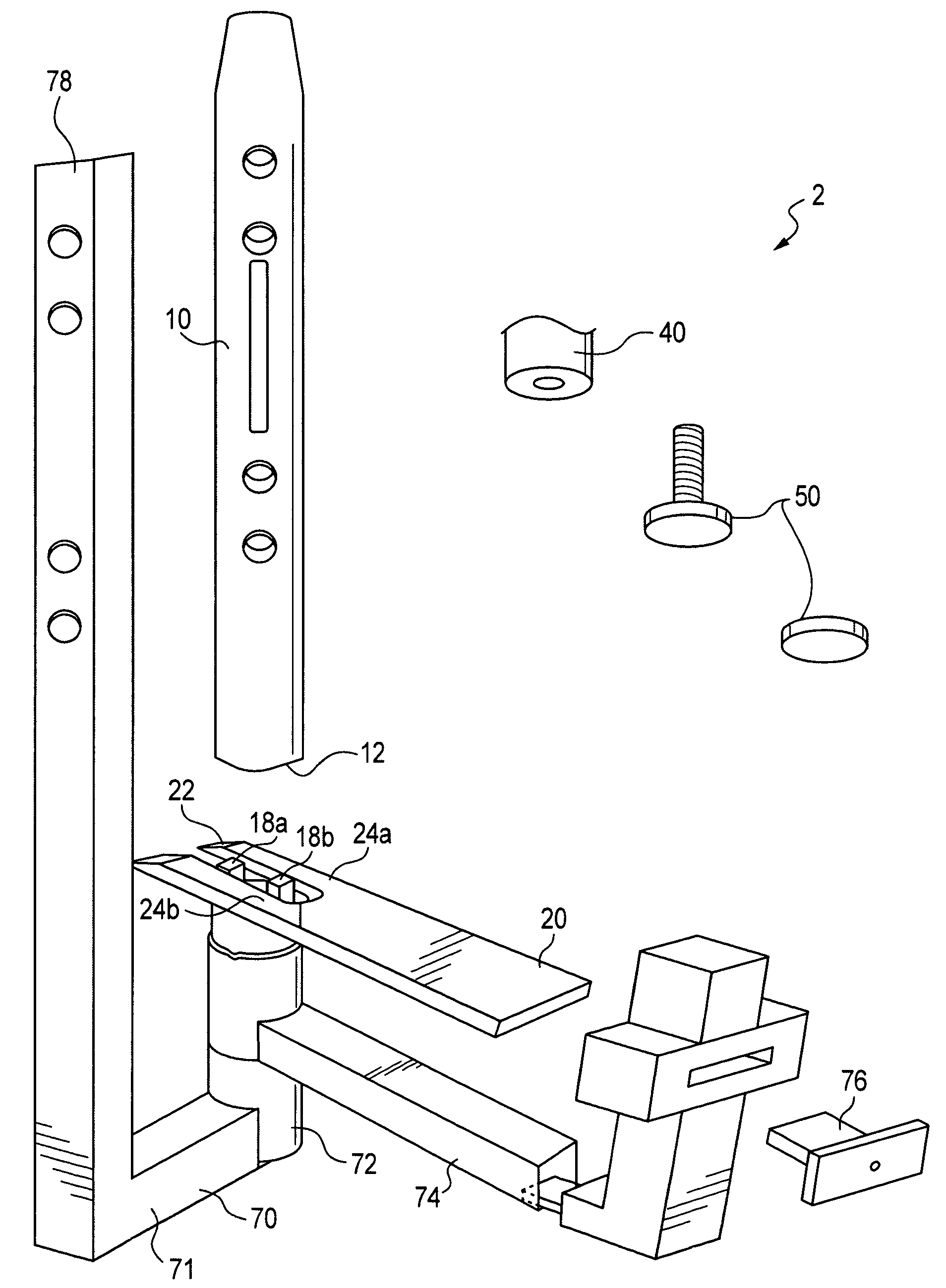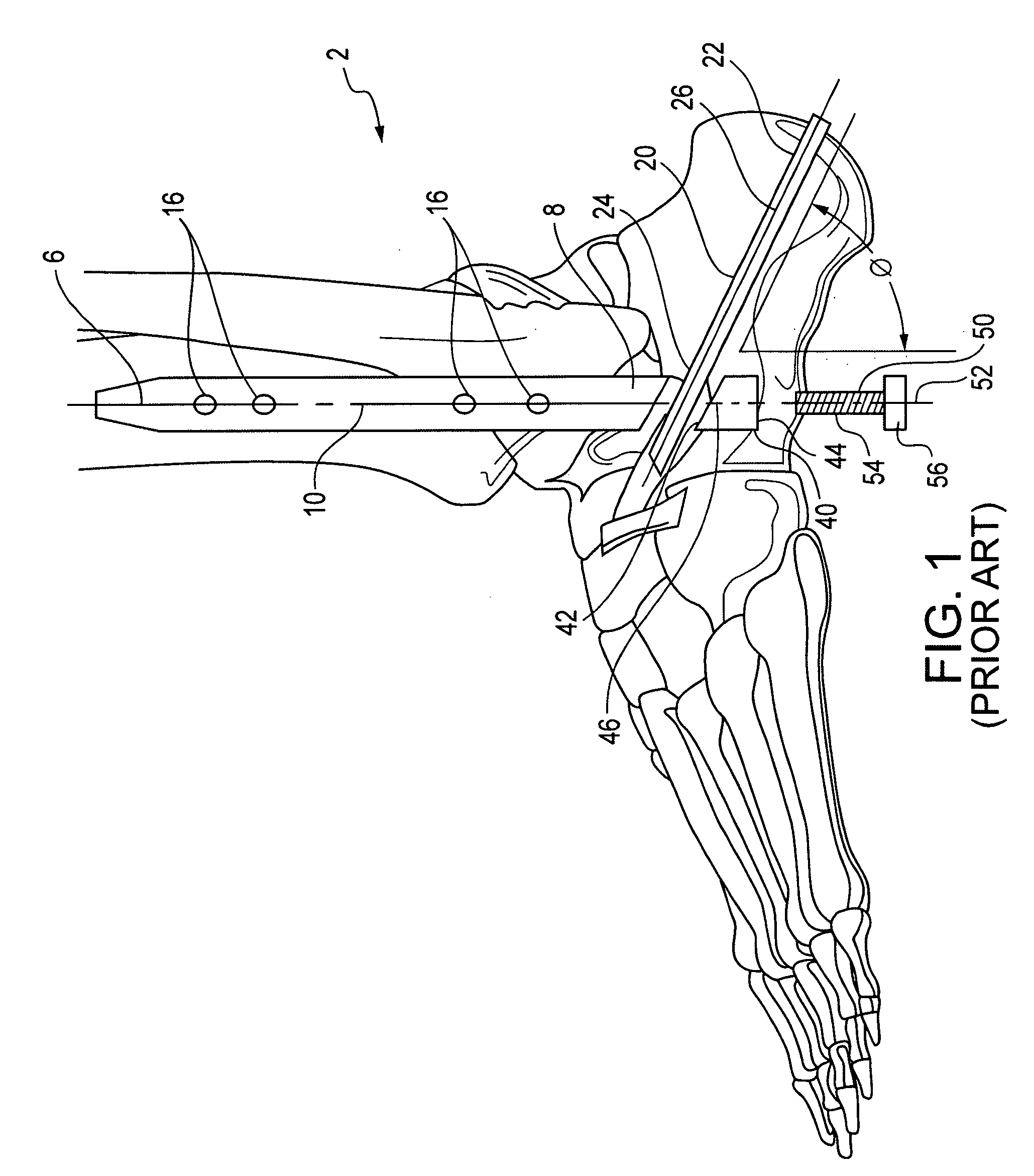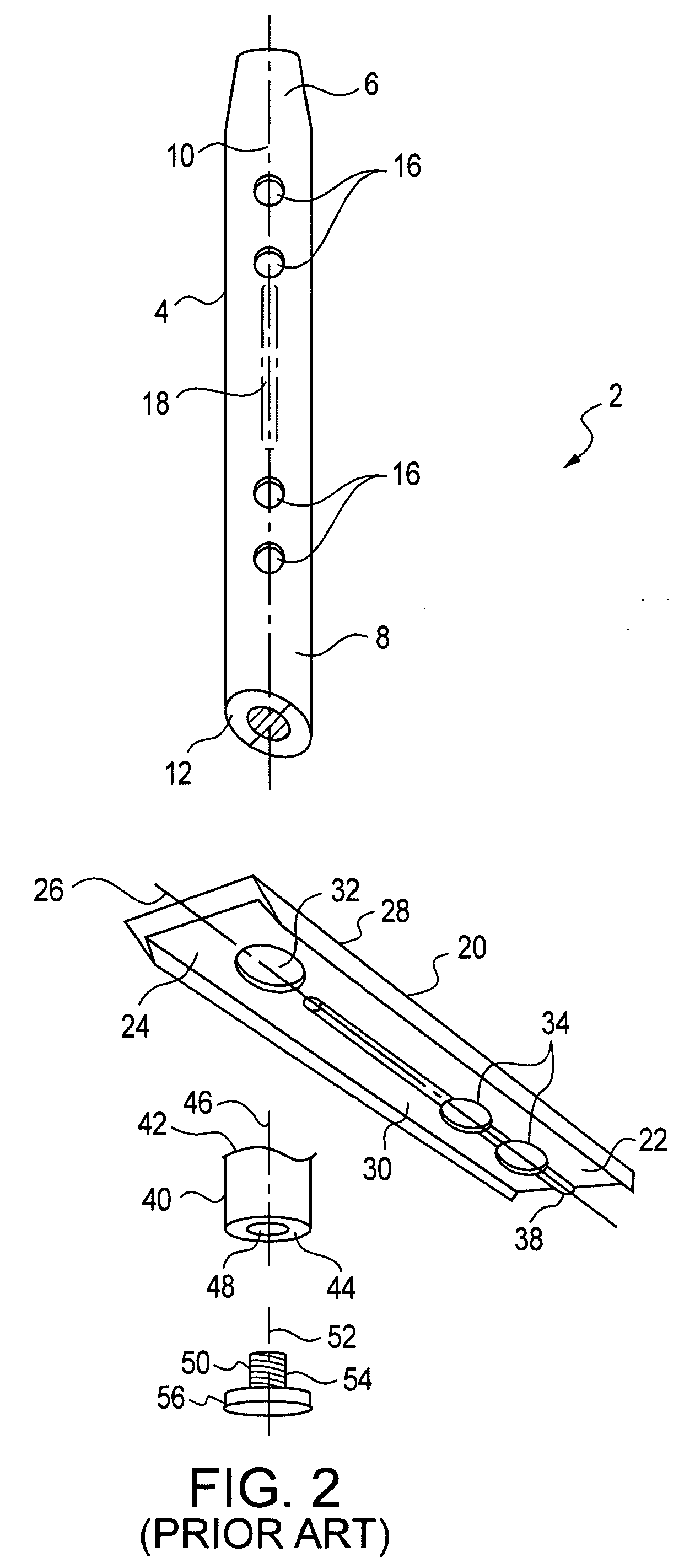Modular, blade-rod, intramedullary fixation device
a technology of fixation device and blade rod, which is applied in the field of improved internal fixation means, can solve the problems of orthogonal plane of motion, increased manufacturing cost, and inability to provide stability in all three directions, and achieves the effect of preventing relative movement and enhancing the ability of the blade to stabilize the bon
- Summary
- Abstract
- Description
- Claims
- Application Information
AI Technical Summary
Benefits of technology
Problems solved by technology
Method used
Image
Examples
Embodiment Construction
[0040]Before explaining at least one embodiment of the present invention in detail, it is to be understood that the invention is not limited in its application to the details of construction and to the arrangements of the components set forth in the following description or illustrated in the drawings. The invention is capable of other embodiments and of being practiced and carried out in various ways. Also, it is to be understood that the phraseology and terminology employed herein are for the purpose of description and should not be regarded as limiting.
[0041]The present invention is used for the stabilization of fusions and or fractures of bodily bones and joints. To explain this invention, its use has been illustrated within in relation to an ankle surgery.
[0042]To better understand the present invention, it is instructive to consider the procedural steps that are involved in an ankle stabilization surgery which utilizes the previously discussed blade and nail / rod intramedullary...
PUM
 Login to View More
Login to View More Abstract
Description
Claims
Application Information
 Login to View More
Login to View More - R&D
- Intellectual Property
- Life Sciences
- Materials
- Tech Scout
- Unparalleled Data Quality
- Higher Quality Content
- 60% Fewer Hallucinations
Browse by: Latest US Patents, China's latest patents, Technical Efficacy Thesaurus, Application Domain, Technology Topic, Popular Technical Reports.
© 2025 PatSnap. All rights reserved.Legal|Privacy policy|Modern Slavery Act Transparency Statement|Sitemap|About US| Contact US: help@patsnap.com



